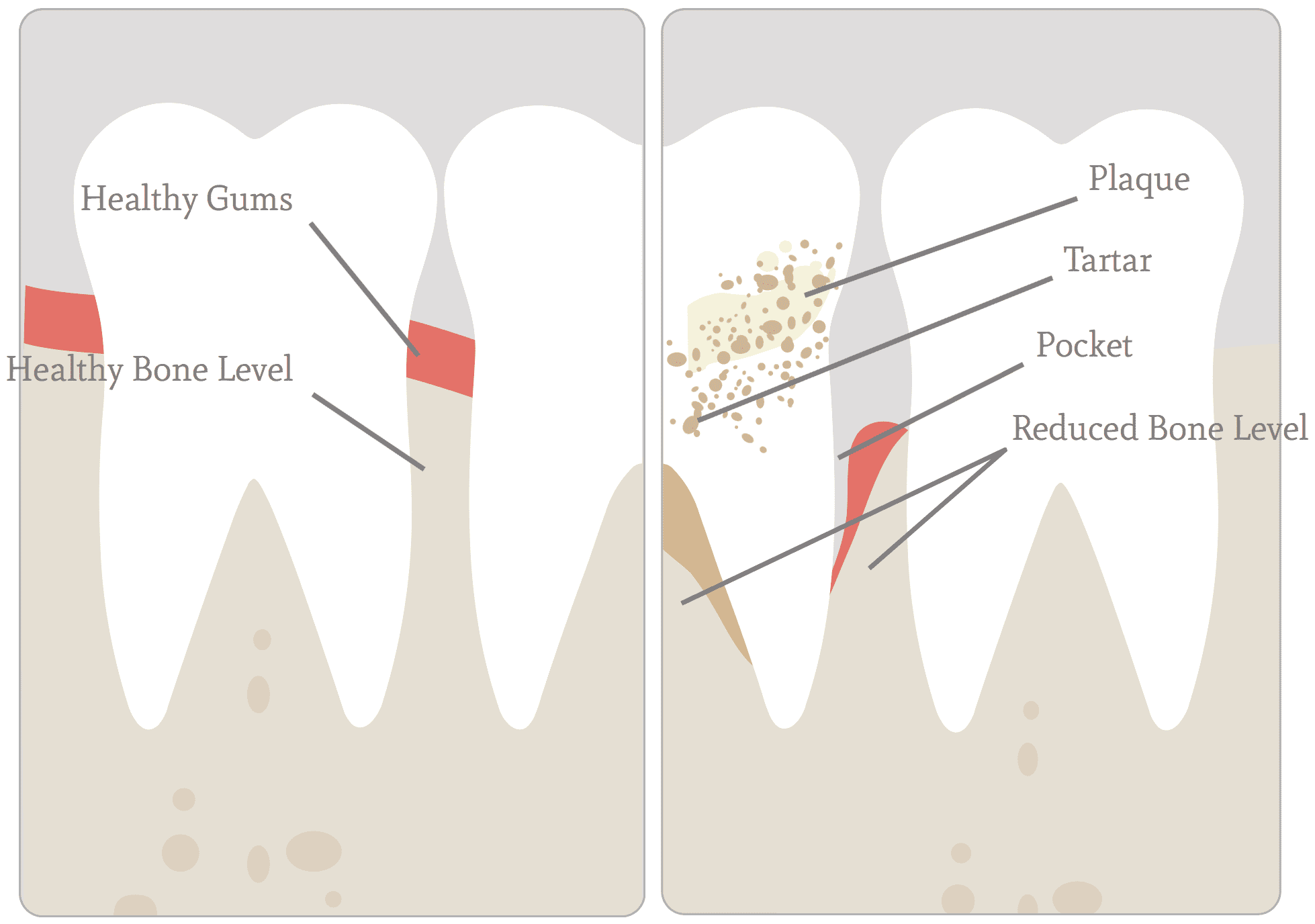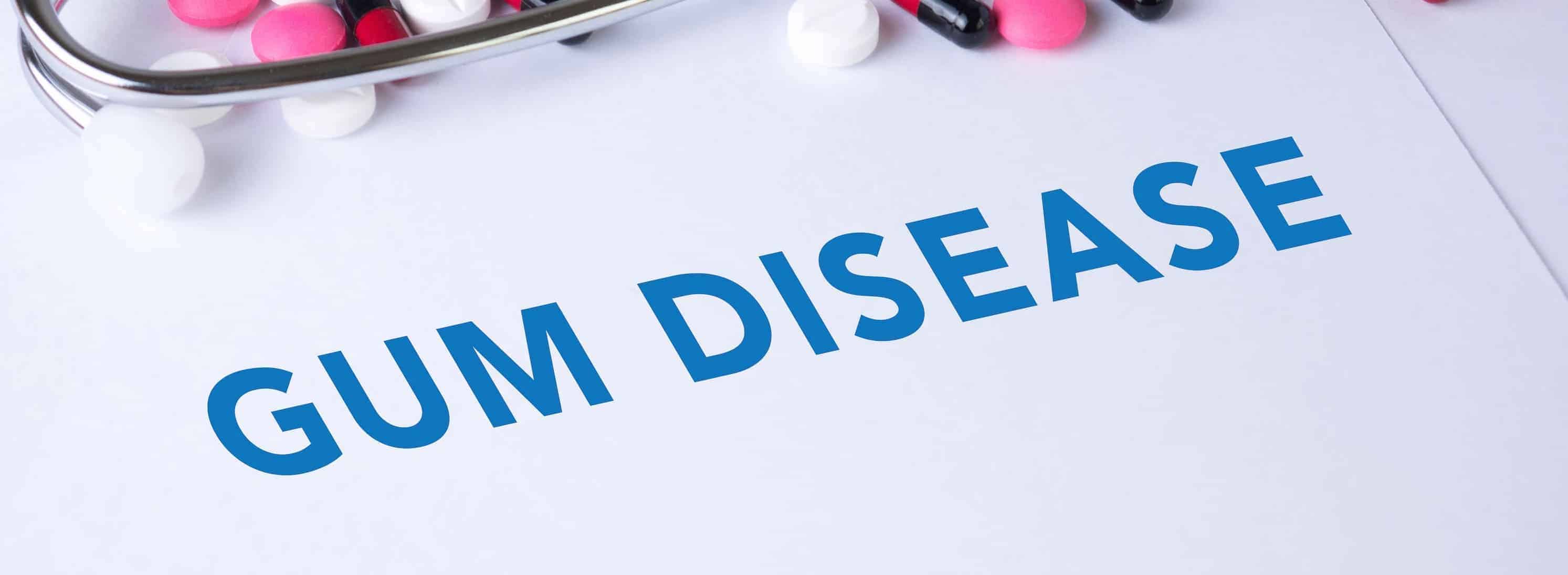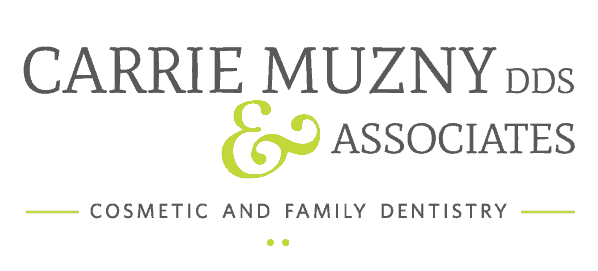GUM DISEASE IS ONE OF THE TOP REASONS FOR TOOTH LOSS IN ADULTS.
Gum disease, also known as periodontal disease, is an infection of the gums surrounding your teeth. Because it is virtually pain-free, many patients do not know they have the disease. During each regular checkup, your dentist will check for signs of periodontal disease by measuring the space between your teeth and gums.

CAUSES OF GUM DISEASE
Gum disease is caused by a buildup of plaque (a sticky form of bacteria that forms on the teeth). If the plaque is not removed (by flossing, brushing, and regular dental chips), it will continue to build up and create toxins that can damage the gums. Periodontal disease forms just below the gum line and creates small pockets that separate the gums from the teeth. Periodontal disease has two stages: gingivitis and periodontitis.
GINGIVITIS
Gingivitis is the early stage of gum disease, when the gums become red and swollen, and bleed easily. At this stage, the disease is treatable and can usually be eliminated by daily brushing and flossing.
PERIODONTITIS
If left untreated, gingivitis will advance into periodontitis, and the gums and bone that support the teeth will become seriously and irreversibly damaged. Gums infected with periodontitis can cause teeth to become loose, fall out, or be removed by a dentist.
SYMPTOMS OF PERIODONTAL DISEASE (ALTHOUGH IT IS POSSIBLE TO HAVE THE DISEASE AND NOT KNOW):
-
Persistent bad breath or bad taste in mouth
-
Gums that bleed easily
-
Red, swollen, tender gums
-
Gums that have pulled away from the teeth
-
Permanent teeth that are loose or separating
-
Any change in the way your teeth fit together when you bite
-
Any change in the fit of partial dentures
-
Puss between your teeth and gums
TREATING GUM DISEASE
Treatments for gum disease can vary depending on the severity of each individual case. Typical treatments include:
-
Non-surgical treatments such as at-home periodontal trays, scaling and root planning (deep cleaning)
-
Periodontal surgery and laser gum surgery
-
Dental implants
-
Antibiotics and mouth rinse
-
Dental prescribed toothpaste to reduce plaque and gingivitis

PREVENTING GUM DISEASE
Regular dental checkups and periodontal examinations are important in maintaining your health and the health of your smile. You don’t have to lose teeth to periodontal disease, and by practicing good oral hygiene at home, you can significantly reduce your chances of ever getting gum disease.
BRUSH YOUR TEETH
Always remember to brush at least twice daily. Brushing two times a day protects your gums and teeth. It cleans and maintains your oral health, preventing gum disease.
DAILY FLOSSING
Floss your teeth at least once a day. By removing food particles and plaque in those hard to reach places along the gum line, you are taking a step towards preventing gum disease.
USING MOUTHWASH
Mouthwash helps reduce plaque on your teeth and gum line. It also helps rid your mouth of food particles left over after brushing and flossing your teeth. In return, this helps reduce your chances of gum disease.
UNDERSTAND THE RISKS
Understanding the causes of gum disease helps you take action to prevent those causes. Age, diet, smoking, and even genetics can increase your risk of periodontal disease. If you are at an increased risk for periodontal disease, then talk with one of our dentists to create a plan to help prevent it.
Schedule An Appointment
ASK OUR DENTISTS YOUR QUESTIONS AND WE'LL ANSWER
If you have any questions about gum disease or think you may have periodontal disease, then give us a call. We will perform an exam to help you figure out if further action is needed. You'll also receive an oral cancer screening and thorough cleaning to try and prevent further issues from arising. Check out our contact page to get directions to our office, view hours, and learn how we can help you.

